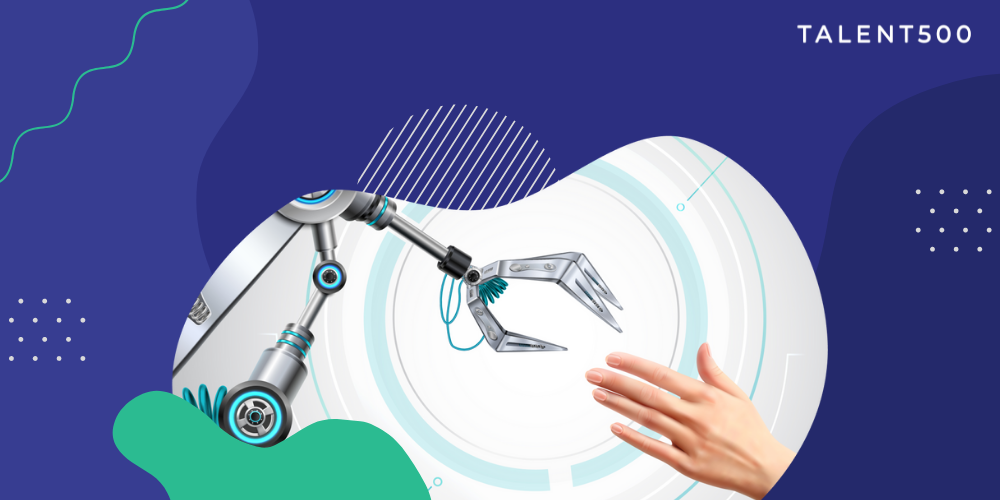With so many career development websites, it is hard to decide which ones to trust. Good career websites are challenging to find, and this post will guide you towards making significant career advancements with resources you can trust.
Our experts evaluated dozens of websites and picked the ones that can help you with your next career move.
Talent500
If career development is on your mind, we can significantly accelerate your career growth! Talent500 is a platform that industry leaders at some of the largest enterprises and Fortune500 companies trust to hire top talent.
Working in such proximity to employers, HR managers and candidates gives us the advantage of creating unique resources to help candidates advance in their careers. We help candidates upskill through courses from some of the world’s most prestigious universities like Stanford, IITs, and MIT. Talent500 also utilizes AI to match candidates with ideal premium jobs. If you are ready to take a career-defined leap, join our platform and get immediate access to resources that will help you stay ahead in the job market!
Indeed
Apart from job postings, Indeed can help you advance in your career. There is a dedicated Career Advice section on the website with valuable resources to learn about recent trends in job markets, essential skills requirements, career advancement guides, and more. If we talk about new career opportunities, Indeed has unmatched dominance, with ten new job vacancies posted on the site every second on average. You can also search company profiles and read employer reviews before accepting a job offer.
Big Interview
If you aspire to have a career at some of the largest enterprises across the globe, you need to know how interviews are done. Extensive interviews can help you with exactly that by offering online interview tutorials. The platform was co-founded by career coach Pamela Skillings, who worked with Fortune500 companies like Citigroup, MasterCard International, and Morgan Stanley. Candidates get access to on-screen mock interviews to learn how it will feel when they face the interviewers. It is one of the best career development sites to learn how to tackle the different levels of an interview process without getting overwhelmed.
CareerAddict
CareerAddict has established itself as a reliable resource for everything related to career advancement and upskilling. It is on this list among the best career development sites because of the first-hand insights about careers and industry it offers directly from experts and professionals. The site has elaborate sections on CV writing, career tests, and a massive collection of video tutorials on various career growth topics. CareerAddict also provides career assessment services through its platform, CareerHunter. It can help candidates discover their strengths and weaknesses as a professional to be better at what they do.
Whether you want guidance about your next career move or are looking for resources to kickstart your job, you can rely on CareerAddict to serve you well.
Opportunity
Best career development websites are not essentially the ones that provide learning resources, upskilling courses, or career advice. Networking sites like Opportunity can also be an essential game-changer in your career growth. When you join Opportunity, you become part of a platform that uses AI and machine learning algorithms. This further helps you meet other people who can add value to your career progress. Unlike other networking websites, when you are on Opportunity, you spend less time searching and more time connecting to people who matter.
You can start with their free webinar to learn how to use the platform to get the most valuable connections from the beginning.
Ask a Manager
It is the best career development site for people working in a management position or someone who wants to join the management domain. Founded by the former chief of staff, Alison Green, Ask a Manager is a unique website that provides an up and close look into the working life of a multitasking manager. It provides resources on how candidates can be better managers and help their team grow and overcome challenges. When you are progressing in your role to a management position, this site can help.
CareerFoundry
Not just a catchy name, but CareerFoundry is simply one of the best career development websites for IT candidates. It uses specialized technology and online courses to help students and job seekers attain the skill sets that prepare them for career advancement in UI/UX design, web development, data analytics, and backend development. If you are a developer, you can significantly benefit by joining CareerFoundry. It provides you access to career specialists, education experts, tutors, and mentors to help you through your career advancement journey.
Conclusion
Career advancement must always be a planned decision rather than an impulse. You can get all the valuable career advice you need to progress through the above-listed career development websites. These are the best career development websites for interview preparation, job search, learning skills, and keeping updated with the latest industry trends.





